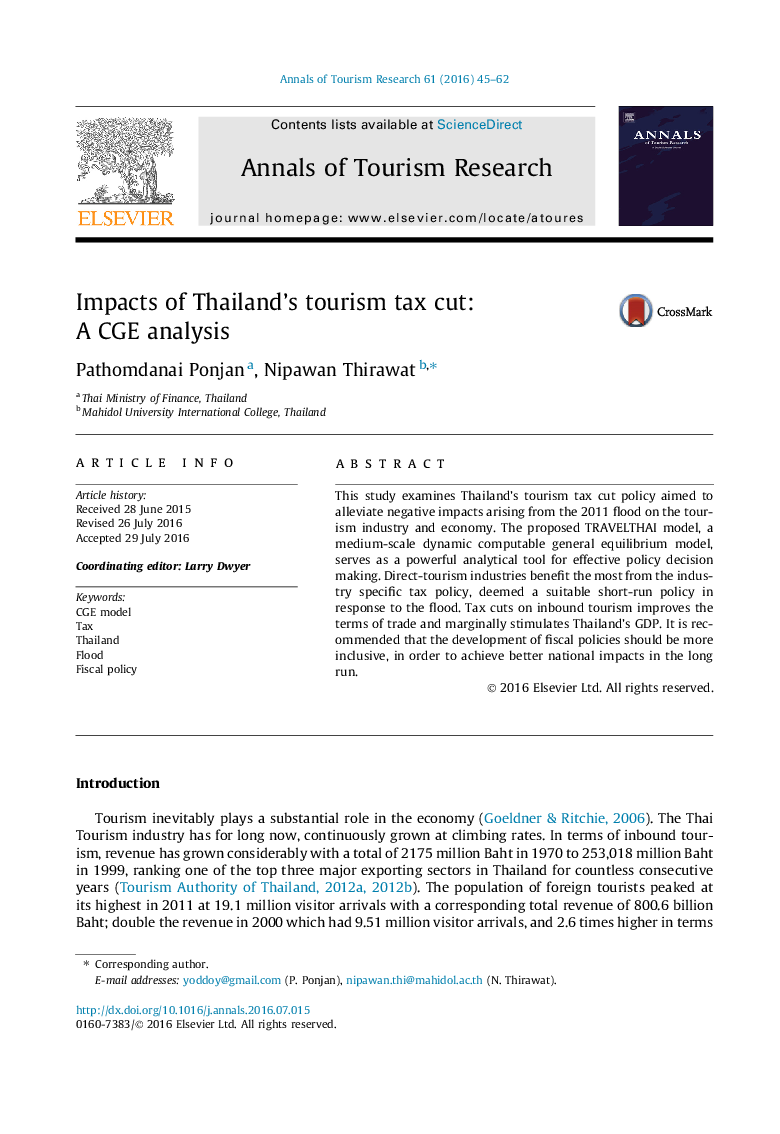| Article ID | Journal | Published Year | Pages | File Type |
|---|---|---|---|---|
| 1006925 | Annals of Tourism Research | 2016 | 18 Pages |
•Uses a dynamic CGE model for the analysis of tourism taxation and disaster.•Presents tourism tax cut as an effective short-run remedy.•Long-run effects on the deviation of real GDP is negligible.
This study examines Thailand’s tourism tax cut policy aimed to alleviate negative impacts arising from the 2011 flood on the tourism industry and economy. The proposed TRAVELTHAI model, a medium-scale dynamic computable general equilibrium model, serves as a powerful analytical tool for effective policy decision making. Direct-tourism industries benefit the most from the industry specific tax policy, deemed a suitable short-run policy in response to the flood. Tax cuts on inbound tourism improves the terms of trade and marginally stimulates Thailand’s GDP. It is recommended that the development of fiscal policies should be more inclusive, in order to achieve better national impacts in the long run.
